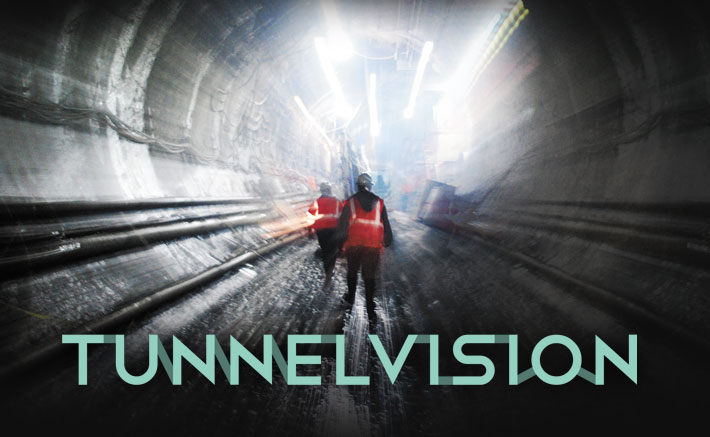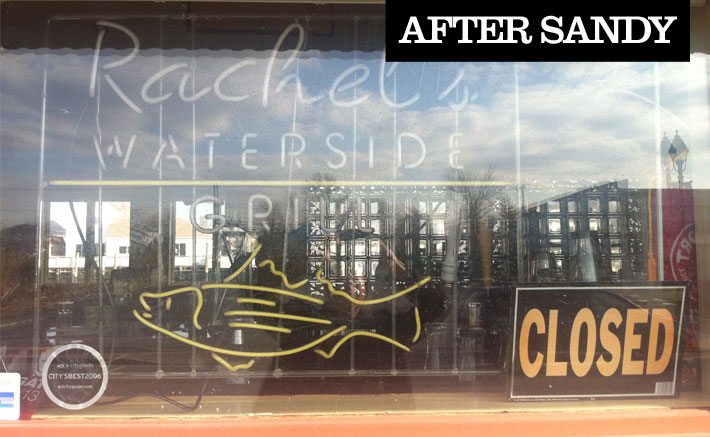
An estimated 27 people died building the Brooklyn Bridge, which took 13 years to complete and opened in 1883. So far on the East Side Access project, Paskoff explains, “We’ve not had a fatality.” But he stressed that the safety of the operation remains a critical concern.
In another era, Horodniceanu, the barrel-chested, down-to-earth president of the project, could easily have been a Roman general. As he talked to us, he seemed to be paying attention to everything else that was going on with his underground “army” of laborers, often conferring with the other men about any particular problems they were facing.
About 2,300 people are directly employed on the project.
“We’ve committed about $3.5 billion so far, about 55 percent of the budget,” says Paskoff. “We’re on target to commit about another billion dollars this year.” He says the project has a full funding grant agreement with the Federal Transit Administration, which means that the MTA would actually owe the government if the project isn’t completed. [That’s what Gov. Chris Christie is resisting when he reneged on spending New Jersey’s share of the Hudson River tunnel project that would have connected NJ Transit with Penn Station.] A spokesman for the MTA says the feds are covering about 37 percent of the East Side Access budget, with the state making up the rest. The trouble is that New York hasn’t committed any money to the final three years of its four-year capital program, coming up about $2 billion short [more on that below].
Our tour was scheduled to end before the start of the swing shift. Back at the check-in, check-out board, a worker sat at a rough, plywood table about to eat a bowl of pasta in red sauce sprinkled with parmesan cheese which had just been micro-waved. Beside him were a purple bag of Doritos, electrical wires, a battery pack and other odds and ends. Once we got our licenses back, we turned to face about two dozen men, some sitting, some standing, all hoping for work on the project. They would fill in if an opening arose. One young man told us he’d been coming there since March. For us, after little more than an hour underground—it felt like a full shift—we were beginning to feel desperate for fresh air and a glimpse of sunlight.
Click for more photos and exclusive video at www.longislandpress.com/tunnel-vision
That’s one clear advantage to working in the Sunnyside Yard project, which will connect the LIRR’s main line with the tunnel to Grand Central. This $730-million leg of the project is an 800-foot-long open excavation, about 90 feet deep, but the weather isn’t a factor. The problem is that the earth is soft and sandy, and the water table is high, so the tunnel boring technology is different.
The pit, dubbed the “Q-tip,” has to be shored up with dozens of struts spanning the space and heavy-duty “anchors” driven into the walls. The ground to be drilled has to be frozen first “so it becomes like rock,” Horodniceanu explains. The workers pump cold brine water through horizontal pipes inserted in the soil. After many months, two German 642-ton tunnel boring machines or TBMs, nicknamed by Queens sixth-graders at I.S. 204 “Tess” (for “tunnel excavation Sunny Side”) and “Molina” (a play on the word “mole”), are finally starting to dig their job.
Last month, Molina began penetrating the earth, moving about 20 to 25 feet a day, allowing workers to line the tunnel with pre-cast concrete forms. The tricky part is that two pairs of workers have to endure pressurized air conditions, as if they were scuba-diving 40 feet below the surface, so that the exposed soil remains firm until the lining is set in place. And just like scuba divers, these tunnel workers have to go through three hours of decompression after each three-hour shift.
“This is the most delicate operation,” says Horodniceanu, pointing above to Northern Boulevard. The LIRR tunnel will have to be carefully dug underneath it without disturbing the cars and subways. “It’s just 120 linear feet, but it’s a $90 million endeavor.”
Close up, Tess’s smooth cutter head looks like a giant blue transformer toy. The teeth are made of tungsten steel and tungsten carbide, which is tougher than titanium. At rest, it doesn’t look so powerful. When it’s spinning, an engineer tells us, “You don’t want to hear it. You don’t want to be there.”
From the front to the rear of the machine’s trailing gear is 300 feet, which includes the sophisticated control module (they use lasers to maintain precision), storage tanks, slurry removal equipment, exhaust fans and electrical support.
The whole TBM looks like a rocket ship lying on its side. Hanging off the back of Molina is a bright banner advertising Tullamore Dew Irish Whisky.
Four tunnels will be dug here, and then the TBMs will be disassembled and removed. Not necessarily so in Manhattan.
“Take my word for it, there is a machine right now under 41st Street and it is going down Park Avenue to 36th Street,” says Horodniceanu. “Then it will make a left and it’s going to stay there. The contractor said, ‘Can I leave it here?’ It’s cheaper for them to leave it in place. The head itself is a 200-ton piece of equipment, just the head!”
With a belly laugh, he added “You park it and you leave it behind. You pour concrete around it and you’ll never know it’s there.” He expects that centuries from now archaeologists exploring Manhattan will be very surprised. “ ‘Wow!
What is this?’ they’ll say!”
That’s certainly taking the long view. In the short term, serious financial challenges will have to be overcome. The question is will the project even be ready by 2016.
At the Grand Central entrance to the East Side Access construction site is a bright blue and white MTA sign featuring a black and white photo of workers positioning the TBM there, all beneath the heading “What’s happening here.” Its explanation was that “MTA Construction projects are making mass transit safe, more reliable and more comfortable for our customers.” We pointed out to Horodniceanu that the words at the bottom of the sign said: “Completion 2010.”
He shook his head and scoffed. “Yeah, right. Forget about that!”







